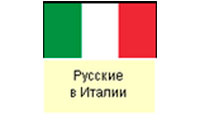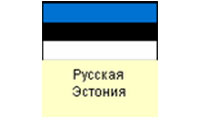Russians in the Economy of Soviet Latvia
After the end of the Second World War Latvia once again became a republic of the USSR. Restoration of the economy destroyed by war began. At the same time the painful transition to a socialist economic system was also resumed. During war time and Stalin’s repressions, Latvia lost almost a third of its population. Therefore in the first post-war years there was a deficit in the labour force, including skilled workers. The integration of Latvia into the united economic space of the USSR, the development of new industry, mass-scale construction and transport demanded a migration of the labour force. The process of labour migration in the Soviet period led to a change in the ethnic composition of the population and in the share of Russians and Latvians among residents of Latvia. (See diagram K, legend – Latvians -1, green, Russians -2, blue)
If in 1935 a little more than 200,000 Russians lived in Latvia, by 1989 their number had increased to 905,500.
The majority of Russians who settled in Latvia after World War II were workers and engineers. Many technical specialists were sent by the authorities to work in Latvia after graduation from universities. The majority migrated of their own free will leaving depressed agricultural regions for the developing industrial centres of Latvia. Retired Soviet servicemen also settled in Latvia.
Both Latvians and non-Latvians participated in developing the industrial potential of Soviet Latvia. But due to the disproportional concentration of Russians in the spheres of industry, construction and transport it would not be a great exaggeration to say that the history of the Russian minority in Latvia in the Soviet period could be reduced to a story of rapid industrial development.
According to data from 1987 the share of non-Latvians among workers in industry and construction industry and construction was 61.9%, in transport – 66.2%, in public utilities and in consumer services - 54.7%, in public education – 46.6%.
At the same time the non-Latvian population of Soviet Latvia (including Russians) was underrepresented in prestigious ruling positions: non-Latvians occupied only 20% of posts in the Communist Party Central Committee of Soviet Latvia, 17% - of minister and chairmen of state committees, 34.8% - among leaders of local branches of the Communist Party, 23% - of municipal high-level officials, 26.4% - among cultural workers and artists.
By the beginning of the 1980’s the output of industry in Latvia had risen 47 times in comparison with pre-war period, and gross agricultural output had increased 1.5 times. Production of those enterprises such as VEF (communications engineering), ‘Radiotehnika’ (electronic equipment), the Riga Carriage-building Works, the Riga Electro-machinery Construction Works, the Riga Bus Plant, ‘Dzintars’ (perfume products), ‘Laima’ (chocolate products) and others was well known not only within the USSR but overseas as well. Large scale industrial concerns were also built in Daugavpils, Liepāja, Jelgava, Ogre and Valmiera. Rail, sea and air transport quickly developed. Large scale housing construction started at the end of the 1950’s. Institutions of higher education in Soviet Latvia prepared specialists in different fields using Latvian and Russian as the languages of instruction.























